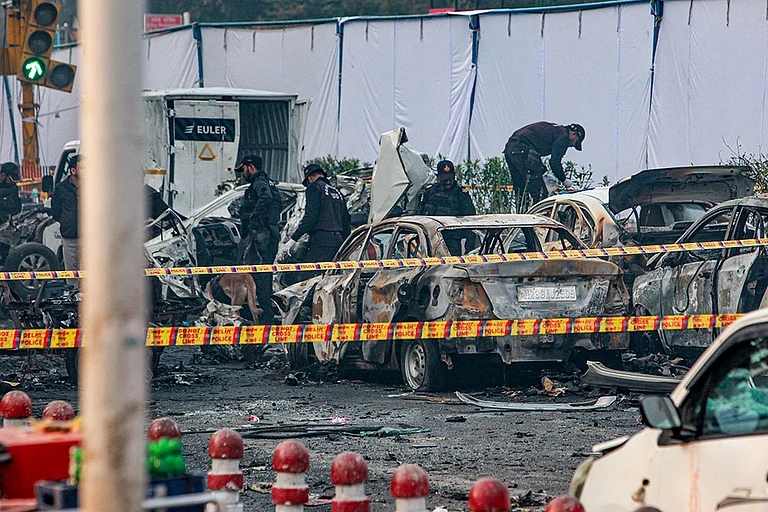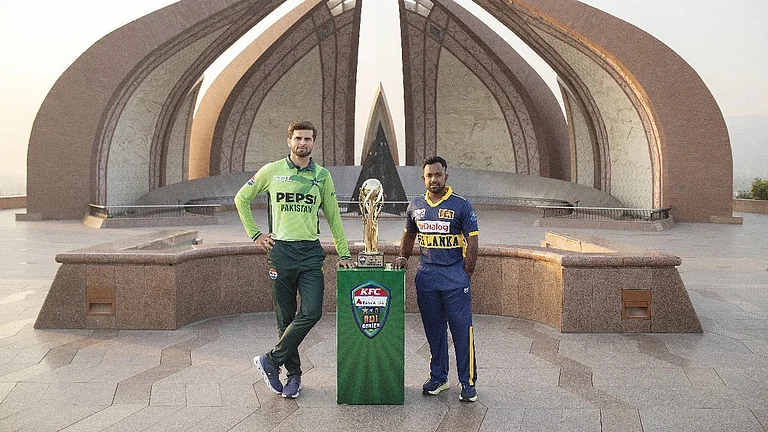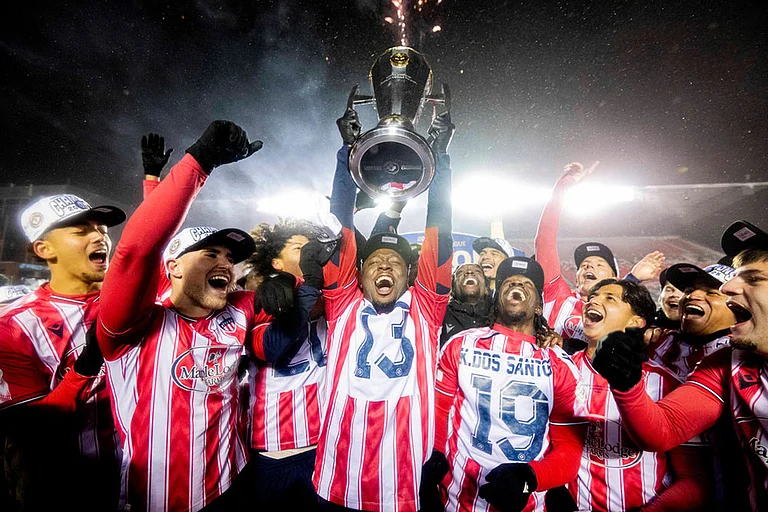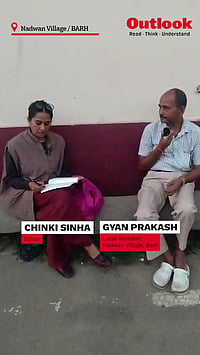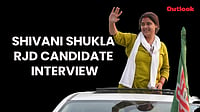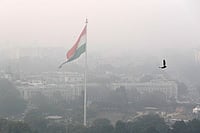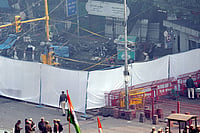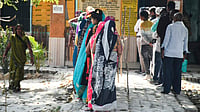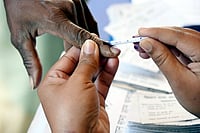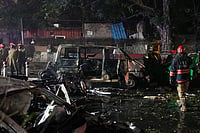On December 10, 1959, toward the end of his White House years, Eisenhower drew a tumultuous welcome in New Delhi. "We had expected a great welcome for the president. But even our anticipations were exceeded," then PM Jawaharlal Nehru had stated. Millions of people jammed the streets to greet the WW-II hero. Although Ike, as Eisenhower was popularly called, had an affinity for India, his 1954 decision to provide military assistance to Pakistan and to include India’s neighbour in the anti-Soviet security system severely damaged US-India ties. Still, by the time he travelled to Delhi, relations were on the mend. He and Nehru had gotten along well during extended discussions in December 1956 in the US. The Eisenhower administration had made economic aid to India a top foreign policy priority.
The visit was an enormous public and private success. Ike and Nehru carried forward their friendly and frank discussions about world affairs and South Asia. Ike was enchanted by the Taj Mahal and gripped by Nehru’s description of "India, her history, her needs, her principal problems." He showed understanding for India’s non-alignment and was impressed by Nehru’s commitment to democracy and economic development. In turn, Nehru admired Eisenhower and accepted him as a man of peace despite being unhappy about US arms aid to Pakistan. Although Ike was unable to make progress in bringing India and Pakistan closer together, the trip firmed up a substantial improvement in US-India relations.
A decade later, in August 1969, President Richard Nixon spent a day in Delhi en route from the Far East to Europe in what was the least productive US presidential visit. Unlike Eisenhower, Nixon disliked India and Nehru’s daughter and then PM, Indira Gandhi. Although Nixon supported economic aid for India’s development, his heart lay in helping Pakistan. Nixon’s primary focus during the Asia trip was on Vietnam and, given Indira Gandhi’s criticism of US policy, he had few expectations that he would achieve much. The crowds greeting Nixon in Delhi were modest, displaying none of the enthusiasm that welcomed Eisenhower. The official talks were low-key and routine. Neither Mrs Gandhi nor Nixon showed much warmth.
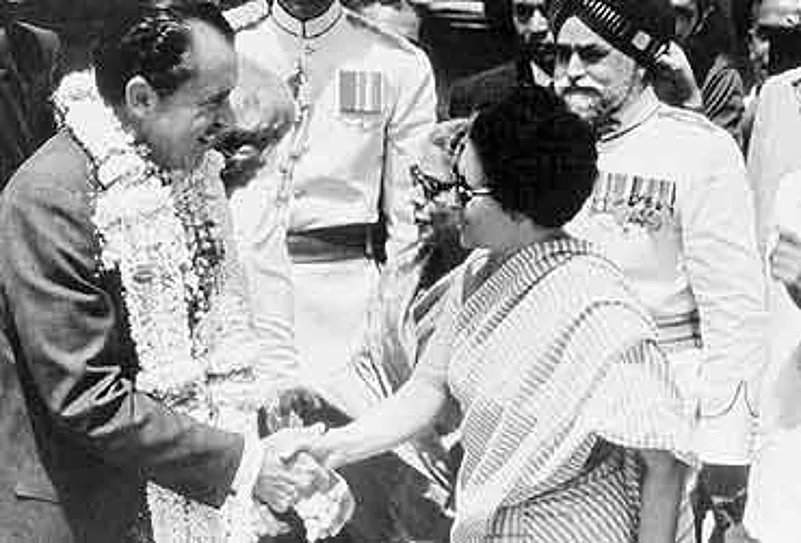
Indeed, what was uppermost in Nixon’s mind was his stop the next day in Pakistan. There he would ask Pakistan’s military dictator General Yahya Khan to help orchestrate top-secret diplomatic efforts to open relations between the US and China. When Yahya agreed, Pakistan became the primary channel during two years of negotiations that culminated in Henry Kissinger’s secret trip to Beijing in July 1971 and with Nixon’s own visit to China the following year.
Eight plus years later, with the Democrats back in the White House, Jimmy Carter came to India on January 1, 1978. Unlike Cold Warrior Nixon, Carter wanted better ties with India as a "regional influential" and hoped to put past irritants behind. Carter placed high value on promoting democracy and human rights. With India once more a democracy after the Emergency ended, he wanted to stress common US and Indian political values. Unlike Ike and Nixon, Carter did not couple his India visit with a stop in Pakistan.
Although the welcome was less effusive than for Ike, Delhi warmly greeted Carter. His address to Parliament was well received and he and Morarji Desai signed a Delhi Declaration rather than issuing a communique. With one exception, the public aspects of the visit were positive. The issue of nuclear non-proliferation, which had clouded bilateral relations after India tested an underground device in 1974, caused an embarrassing incident.
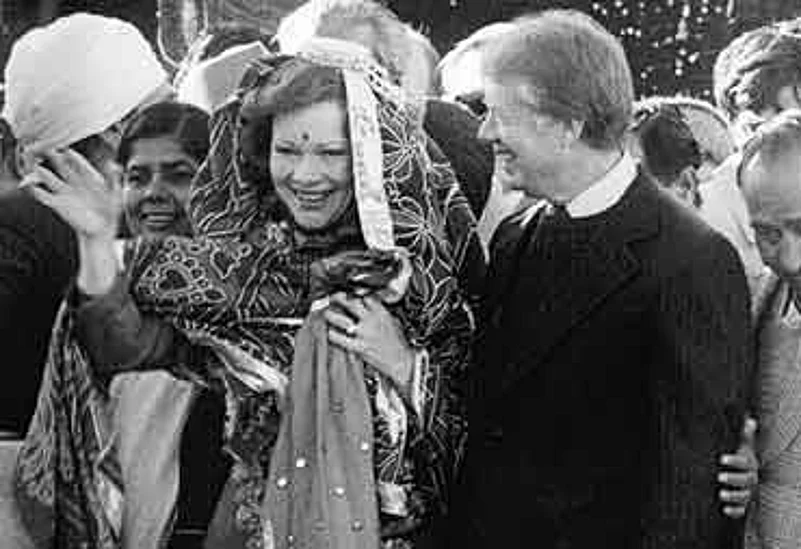
An open microphone picked up and broadcast Carter’s private comment to then secretary of state Cyrus Vance that he wanted "a cold and very blunt" letter sent to Desai whom Carter had found unbending in their private discussions on nuclear matters. Although the PM brushed the matter aside, the media played up the incident over the more positive aspects of the visit. In any event, the improvement in the bilateral relationship did not turn out to be long-lasting. Economic ties were far thinner than today and became even thinner after Coca Cola and IBM pulled out of India rather than accept additional restrictions on their operations.
It was 22 years before another US president would come to India. This reflected the state of relations after New Delhi failed to join other nations in opposing the December 1979 Soviet invasion of Afghanistan at the UN. Though prime ministers Indira and Rajiv Gandhi both visited the US, President Ronald Reagan didn’t go to India during his presidency. Nor did his successor George H.W. Bush. After the Cold War ended and the US emerged as the pre-eminent global power, India was not a high priority foreign policy interest for Washington.
During Bill Clinton’s first term, 1993 to 1997, the presidential focus lay elsewhere, on other parts of the world and other issues. Though Clinton’s administration supported India’s economic reforms, its main political and security interests lay in trying to prevent further nuclear proliferation. When Clinton began his second term in 1997, he altered course and pressed for improved ties with India, capping it with a presidential visit. Initially slated for 1998, the trip was delayed, first due to impending Indian elections and later due to a plunge in relations after the May 1998 nuclear tests.
Finally, in March 2000, as Clinton’s second term was nearing its end, he arrived in Delhi to enjoy the most successful presidential sojourn in India since Eisenhower’s. Even though nuclear sanctions remained in place, ties were much better. Clinton’s handling of the Kargil crisis to India’s satisfaction and the substantial increase in bilateral trade and investment after India’s economic reforms, especially in the booming IT sector, were important pluses, along with India’s own interest in closer ties with the US.
Once Clinton landed in Delhi, he could do no wrong. In five activity-charged days, his charisma and empathy charmed Indians. His address to Parliament was wildly applauded and wherever he travelled—Delhi, Hyderabad, Mumbai and elsewhere—he and his Indian hosts took to each other. The visit, and the vision statement the two sides adopted, seemed to put the seal of approval on far better bilateral ties. The fact that five happy days in India were followed by five chilly hours in Pakistan didn’t hurt.
Now, six years later, George W. Bush is preparing to travel to India. The Bush administration has continued the efforts that Clinton began to develop a broader and more positive partnership with India. Private sector economic ties have expanded. India is the subject of much high-level business interest and financial investment. The Bush administration has also striven to develop and expand defence cooperation, something absent previously. The Congress-led coalition, like itsBJP predecessor, has reciprocated US interest in developing a broad-based Indo-US partnership.
But as in Carter’s time, almost three decades ago, the nuclear problem continues to pose difficulties. In July 2005, Bush and PM Manmohan Singh agreed upon a "nuclear bargain". This envisaged India’s splitting its civil and military nuclear facilities and accepting international safeguards on the former and the Bush administration’s obtaining necessary changes in US law and international nuclear supplier rules to make India eligible for civil nuclear cooperation. The slowness of the two governments in agreeing on the details of the agreement makes it unlikely that final arrangements will be in place before Bush reaches Delhi. Indeed, vehement opposition in both capitals makes it unclear if the "bargain" can be implemented. In Washington, critics of the July 2005 nuclear accord say India is not doing enough to warrant an exception to non-proliferation ground rules while in New Delhi opponents argue that the deal could actually harm Indian security concerns.
Still, despite the nuclear problems, Bush can expect a generally warm welcome when he arrives in Delhi. A July 2005 Pew Trust opinion poll revealed that India was the country where the US had the most positive image, even more so than even Canada or Britain. While the Iraq war and related issues have tarnished the US image in Europe and many other parts of the world, these issues have not loomed as large in India. India is working with the Americans in the war on terror even though Delhi remains unhappy over Bush’s unwillingness to press Pakistan President Pervez Musharraf harder to deliver on his pledge to curtail Pakistan-based terrorists and their attacks on India.
How will the trip go? It is highly unlikely that Bush can repeat the emotionally-charged successes of Eisenhower and Clinton. At the same time, he will do much better than Nixon. The challenge for Bush (and for his Indian hosts) will be to prevent possible disappointments over nuclear matters from overshadowing the positives during the visit, as they did for Jimmy Carter. Fortunately, there is vastly more political and economic substance to Indo-US ties and far better interaction between the two governments than in Carter’s days in the White House. The presence of two million economically prosperous Indian Americans has also provided an important bridge between the two countries. There is thus new and significant bilateral ballast to steady the relationship. Still, if no agreement is reached on the details of the July 18 nuclear accord, it will be difficult for the visit to serve its main purpose of providing a further major boost to ties between Washington and New Delhi.
(A retired State Department South Asia specialist, Dennis Kux is currently a senior policy scholar at the Woodrow Wilson Center in Washington.)







